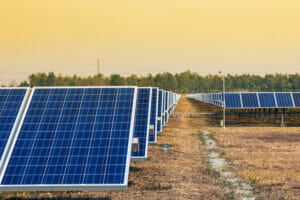News
Ensure the Success of Your Solar Tracker with Anemometer Siting

On-site anemometers play a crucial role in solar tracker operation by triggering the trackers to move to their wind stow position as winds ramp up from an approaching storm. Anemometer placement is a critical consideration.
Poorly sited anemometers could trigger stow too slowly or too often. Additionally, if a failure occurs, it is helpful to have wind data from several anemometers around the site to verify the wind speeds during the wind event that caused the failures. A network of too few anemometers will not adequately characterize a wind event.
Anemometers placed too close to the trackers will generally see reduced wind speeds. Depending on tracker tilt and wind direction, this is sometimes even true of anemometers placed upwind of the array. Anemometers set in clearings inside the array must be surprisingly tall to avoid the cumulative wind slowdown from the surrounding array. Additionally, anemometers should not be placed near (or on) structures like inverters as that placement can cause sheltering and acceleration, depending on the wind direction.
CPP Wind recommends placing the anemometers significantly above and upwind of the trackers to minimize sheltering. We can also provide sheltering factors to correct the trackers’ influence on anemometer wind speed measurements.
Installing multiple anemometers around the site is also recommended to ensure some redundancy in the wind speed measurements if an extreme wind event occurs. It is common to have one or more anemometers damaged during an extreme wind event. Electrical power may also be disrupted, so a local data storage solution is wise.
Anemometer siting can be complex based on the site layout, local topography, and site surroundings (such as clusters of trees). CPP’s experts can advise on siting the anemometers at your specific site or provide recommendations on general policy to help prevent wind failures. Contact us today to learn more!
We provide consulting in several languages, including English, Chinese, Spanish, French, and German.
